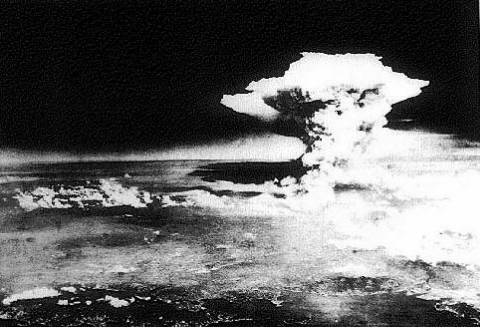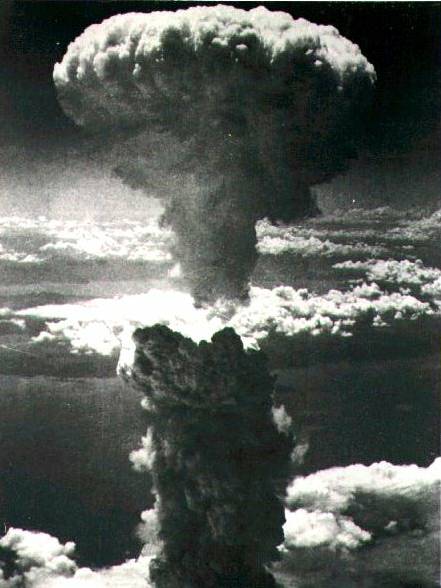

ATOM BOMB 1946.
Early atomic weapons testing film. Total Runtime Appx. 7 minutes.
OPERATION CROSSROADS 1946.
Operation Crossroads was a series of nuclear weapon tests conducted by the United States at Bikini Atoll in the summer of 1946. Its purpose was to test the effect of nuclear weapons on naval ships. The series consisted of two detonations each with a yield of 23 kilotons. Able was detonated at an altitude of 520 feet (158 m) on 1 July 1946; Baker was detonated 90 feet (27 m) underwater on 25 July 1946. A third planned burst Charlie was canceled. Total Runtime Appx. 27 minutes.
Special Delivery 1946.
Airplanes and missions of the U.S. Army Air Forces emphasizing Operation Crossroads (the Bikini Island atomic bomb tests). Total Runtime Appx. 13 minutes.
TRINITY through BUSTER-JANGLE 1952.
Originally made in 1952 this carefully sanitized film to edit out sensitive technical information was declassified in 1997. It covers the first test at Trinity in 1946 to the BUster-Jangle test in 1951. Highly detailed with very informative explanations on each of the tests. A must have for historical refernce to the early atomic weapons program. Total Runtime Appx. 22 minutes.
Military Participation on BUSTER-JANGLE 1951.
Operation Buster-Jangle was a series of seven (six atmospheric one underground) nuclear weapons tests conducted by the United States in late 1951 at the Nevada Test Site. Buster-Jangle was the first joint test program between the DOD and Los Alamos National Laboratories. 6500 troops were involved in the Desert Rock I II and III exercises in conjunction with the tests. The last two tests evaluated the cratering effects of low-yield nuclear devices. This series preceded Operation Tumbler-Snapper and followed Operation Greenhouse. Total Runtime Appx. 75 minutes.
Exercise Desert Rock 1951.
Exercise Desert Rock was a 1951 experiment by the Atomic Energy Commission working with the US Army to "allay fears and uncertainty regarding nuclear radiation and gamma and x-ray effects on humans and animals". The test was done at the Nevada Proving Grounds with an estimated 5000 troops in a tent encampment approximately 27 miles from ground zero. Total Runtime Appx. 27 minutes.
Operation GREENHOUSE 1951.
Was the fifth American nuclear test series the second conducted in 1951 and the first to test principles that would lead to developing thermonuclear weapons (hydrogen bombs). Conducted at the new Pacific Proving Ground all of the devices were mounted in large steel towers to simulate air bursts. Succeeded Operation Ranger Preceded Operation Buster-Jangle.
Greenhouse represented new and aggressive designs for nuclear weapons. The main idea was to reduce the size weight and most importantly reduce the amount of fissile material necessary for nuclear weapons while increasing the destructive power. With the Soviet Union's first nuclear test just a year and half earlier the United States had begun stockpiling the new designs before they were actually proven. Thus the success of Greenhouse was vital before the development of thermonuclear weapons could continue.
A number of target buildings including bunkers homes and factories were built on Mujinkarikku Island to test weapon effects.
The "George" explosion was the world's first thermonuclear burn though it was just a test design unsuitable for weaponization. Shaped like a torus the "George Device" had a small amount of liquid hydrogen placed at its center. The vast majority of its yield derived from fission; the energy output from fusion was insignificant in comparison. However it validated the principles which would be used for the first full thermonuclear device test Ivy Mike a year later. "Item" was the first boosted fission weapon nearly doubling the normal yield of a similar non-boosted weapon. Total Runtime Appx. 22 minutes.

